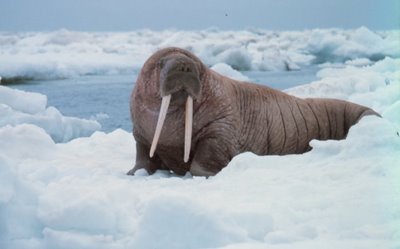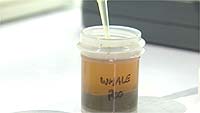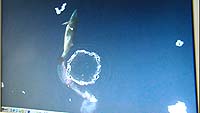
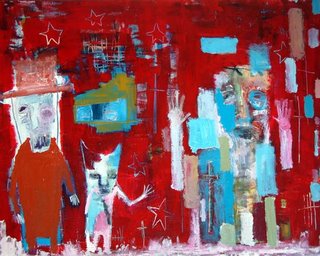

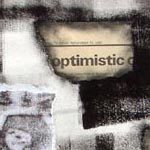
I posted the following blog entry on my dear friend Bethany's blog (http://bethanypearce.blogspot.com) at the end of January, and I spent so long typing it that I thought I would post it here too.
Like Bethany, I have a distinct fascination and appreciation for a rapidly growing movement in the art world known as 'outsider art'. Bethany had posted some art by Jesse Reno (whose art is also featured on this blog), and claims that her husband cannot stand it, yet she adores it. Thus, the dichotomy of opposition in taste inspired me to ponder the purpose and direction of art in our supposedly post-(post?)modern society.
Just what is the art world these days? Because of the increasing triviality, everyday life has gradually become our central preoccupation. No illusion or art form can hide the poverty of our daily actions any longer. Thus, I say that outsider art is the aesthetic reaction to the inane and banal focus that our society (and I would argue that this applies to the rest of the capitalist world, and to every country affected by the long and destructively greedy fingers of this economic regime…think 1st, 2nd, 3rd, and 4th world nations) places on art that means nothing. Flashback to Britney Spears, how important the debauchery of Paris Hilton seems to all those bent on supporting it, etc. The art world of today, or should I say insider art is completely focused on lulling us into a state of such passivity and boredom (think hotel art, landscape art, wild life art…when was the last time you were out and a piece of art made you think? Rarely happens) that we no longer feel any personal agency to act critically or independently against issues that are so much more important and humanizing and pressing.
Since our society has come to this place of obedience and immobilization, creativity of artists from all media is diminished to alienating themselves, and they end up expressing themselves according to the dominant imagery of their time. In submissing like this, the artist’s expressiveness ends up re-presenting the everyday, which makes weak statements about how individuals must react to inequality, injustices, greed, and dehumanization.
Now, some people might read this and think “whoa….wait a second here, Vanessa, I know that there are things out there that need to change, I know of artists who aren’t dulled into conformity”. Yes, I am sure that is true, but immediately, I think about the Belgian philosopher Raoul Vaneigem’s condemnation of the institutional and informal left (the commies, the Happy Planet guzzlers, the people who spend time picking out organic food from grocery stores that are multinational corporations…the people participating in the increasing triviality of everyday life (myself). Vaneigem is quoted saying “People who talk about revolution and class struggle without referring explicitly to everyday life, without understanding what is subversive about love and what is positive in the refusal of constraints, such people have corpses in their mouths” (1967:25).
So, how are you relating this to outsider art, you might be tempted to ask me. Outsider art is disruptive to what everyday life has become, to how it consumes our focus (media, appearance, brands, status, etc), how it takes up our time (hair straightening, choosing a pair of jeans, applying makeup, desiring a certain job, house, vehicle) etc, without considering how such actions translate into the perpetuation of local and global inequality and dehumanization. Accordingly, then, outsider art stands in complete antithesis to what the triviality of everyday life has deemed “aesthetically pleasing”. It is raw, it is ugly, it makes us feel bad, it seems crude, lacking in the finesse and skill of form, angsty.
Some of you may know my affinity for Hegel’s theory of the aesthetic, and I apologize for ranting on this subject again, but it warrants further inquiry. In a nutshell, Hegel believes that to be art in its highest form, art must be a reflection of the mind of the artist. You must be able to look at a piece of art, listen to a piece of music, hear a poem, watch a dance or theatre performance and you must be able to become so engulfed by the piece that your experience of it is a cerebral and visceral connection to the inside of the artists mind. What are they thinking, saying, feeling, hating, loving, consuming, opening, exploring, confusing, experiencing. To examine art aesthetically, one should feel as if he/she is engaging in a dialogue with the artist; a connection between the hearts and minds must take place for a piece of art to truly be beautiful.
If we are choosing art for our homes because we like how it looks, the colours, the size, the subject, the composition, the contrast (it is generally chosen because it doesn’t force us to think about how complicit our lives are in the suffering and perpetuation of the capitalist agenda). Hence, many people do not want outsider art present in their homes. It laughs in our faces, it forces us to recognize how we are subscribers to the triviality of the everyday, it grosses us out, it doesn’t blend in well, it might disturb the children, it grates us.
This conversation has dealt primarily with half of the theory of the aesthetic, content (the dialogue between minds and hearts). In the previous paragraph I alluded to the second aspect, form. I don’t have time to get into a detailed investigation of form and aesthetic, but there is a wealth of discussion that should happen around history, society, and artistic form, especially pertaining to outsider art. This is an interesting trend in art that repeats itself at times when the world stands in particular violence and turmoil (remember Dadaism, anyone?). At these times, form (technique) really takes a dive to reflect the chaos and loss of humanity in our lived realities. Such degradation to the planet and to us does not deserve realism; consequently, the disruption of the relationship between form and content manifests itself in cacophony and dissonance (outsider art).
Overall, then, outsider art forces us to hold up a mirror to insider art, and the experience of such an experiment results, in my opinion, in the psychic disequilibrium of looking in a mirror at yourself and seeing no reflection at all. Personally, I do not think that insider art reflects a dialogue of heart and mind with its creator. Yes, there are very many talented people who can carefully and accurately depict a landscape, an animal, or a scene of people in object realism; however, simply copying a meadow to exact detail (though an impressive relationship between hand and eye coordination) lacks creativity, dialogue, motion, or energy of space and place.
By a strange oversight, few artists go to the trouble of studying how people actually lived during the most extreme revolutionary moments and the effects of mundane everyday life on the perpetuation of local and global inequality. This is the gift of outsider art. Shake, rattle, and roll!


